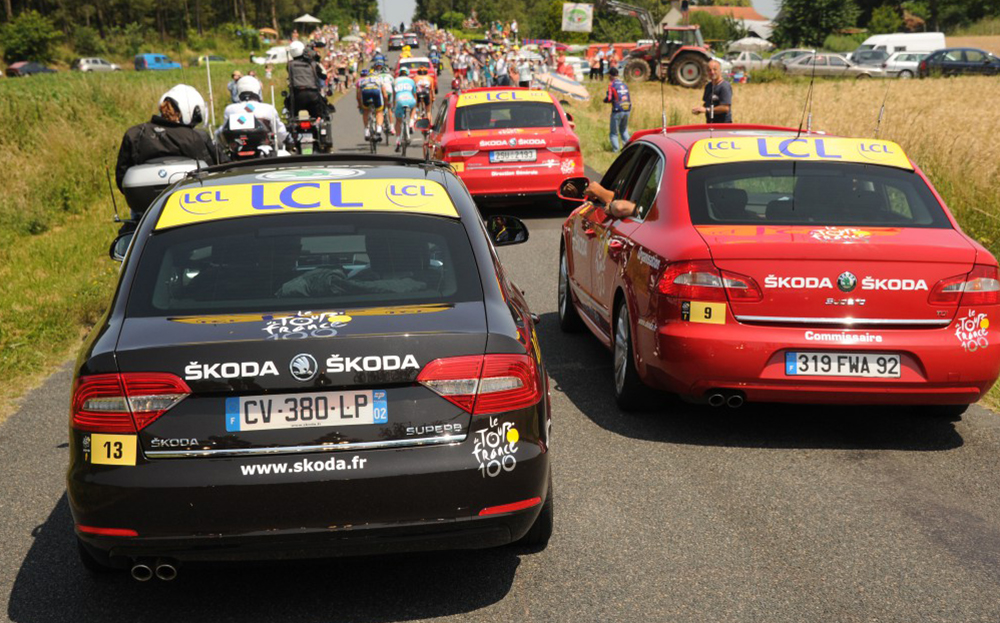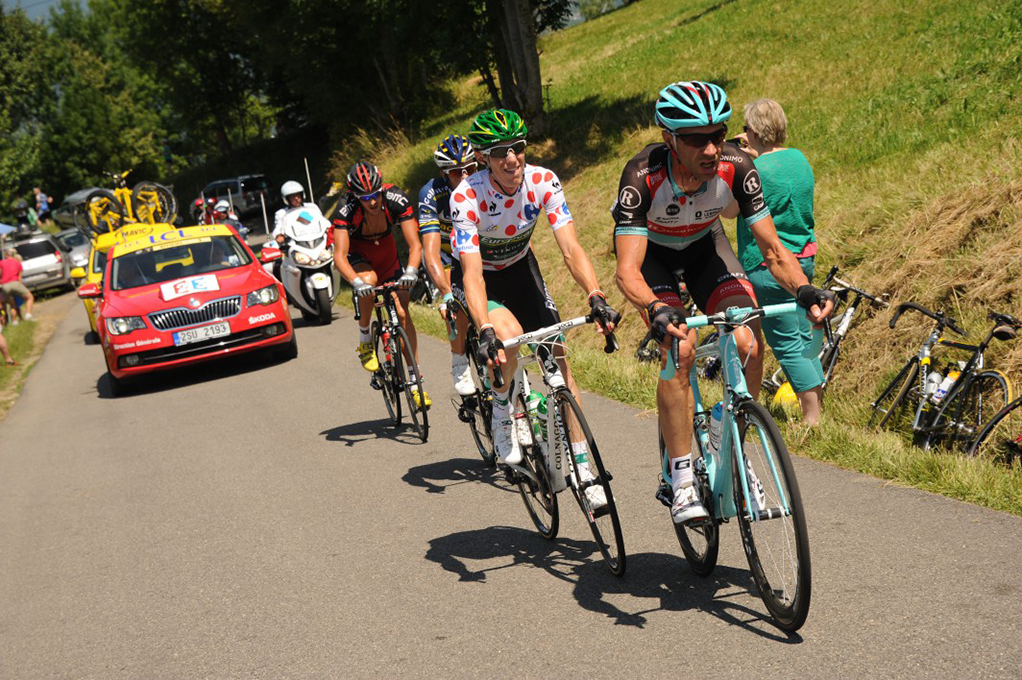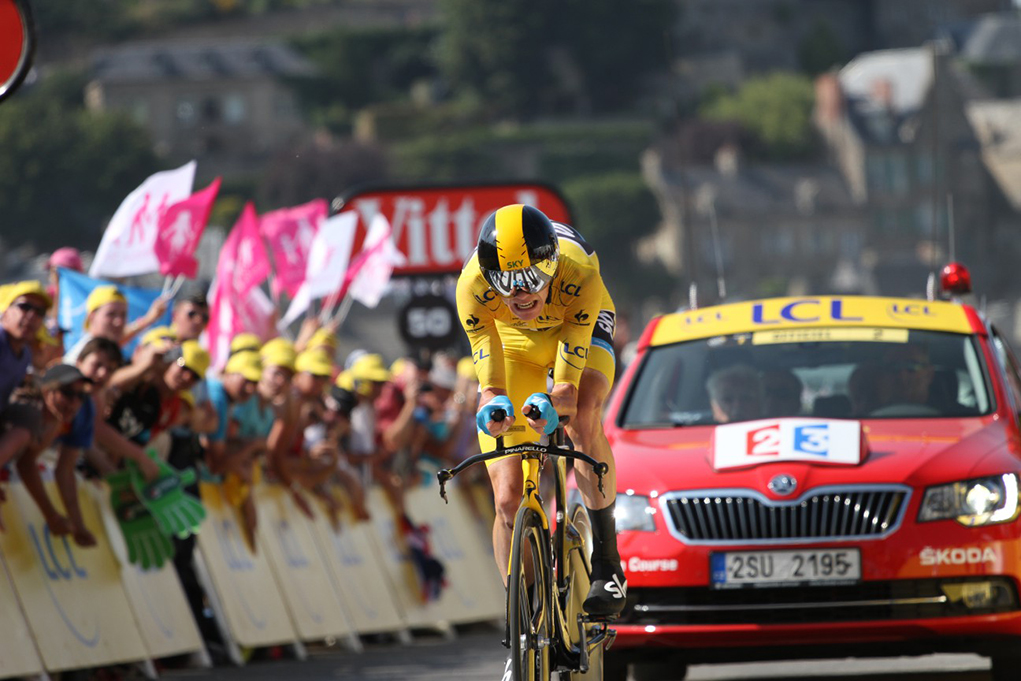Unsung heroes: the support cars behind the Tour de France
Whatever you do, don't hit the guy in the yellow jersey

A FEW miles outside the town of Besançon, near the Swiss border, the car’s radio crackles into life. “Kittel puncture!” shouts a disembodied voice, at which the driver floors the throttle and we lunge forward, weaving between cars, motorbikes and cyclists, and coming within inches of the thousands of spectators lining the roadside.
Sitting in the passenger seat, I find myself gripping the door handle and bracing myself for the impact that seems inevitable . . . but it never comes.
Instead, the driver weaves balletically around the other road users, hand on horn, until we reach the German pin-up Marcel Kittel, who is marooned at the roadside with a flat tyre. The car skids to a halt as a mechanic leaps from the back seat and changes the wheel — within a matter of seconds — then Kittel saddles up and accelerates off.
Click here to search for used cars on driving.co.uk
If you think completing a stage of the Tour de France in a car is like taking part in the Oxford and Cambridge boat race in a Sunseeker yacht — that is, not particularly difficult — you’re wrong. There are few driving experiences more exhilarating than co-piloting a Tour de France team car.
These support vehicles are the unsung heroes of the world’s most famous bike race, which culminates in Paris this afternoon. Without them the Tour would collapse into a chaos of blowouts, crashes and exhausted riders.
The 44 cars — two for each team — follow the peloton in an order determined by the ranking of the team’s lead rider at the beginning of the stage. I am with the Giant-Shimano team and our first car is in 17th place, with our second in 34th. The line-up is about more than prestige: the nearer you are to the front, the quicker you can respond to a stricken rider. That can gain you precious seconds.

A radio feed sent to the vehicles — which are all Skoda Octavias — reports breakaways and crashes, and gives cars permission to break ranks. Each car is a cycling workshop on wheels: a bike repair outfit, a feeding station, a hotspot for communications — even a counselling service. Ours carries three spare wheels, a toolbox and nine bikes worth about £10,000 apiece.
Reaching stricken riders is difficult. When the call comes via the two-way radio worn by all competitors, the team car has to accelerate through the traffic. “You must anticipate how professional riders are going to behave,” says Stephen Roche, who won the Tour in 1987 and now drives a VIP car for Skoda, the sponsor of the race.
“Almost every driver is a former cycling pro — it’s all about understanding the flow of the peloton. For example, if there is a crosswind I know how the riders will line up. It’s exhausting, but you can’t lose concentration.”
Over the three-week race the cars will do more than 2,000 miles and are driven non-stop for more than five hours a day. They mostly stick to 30mph, but on mountain descents they have to keep up with the riders, who can hit 60mph.
Although the support drivers undergo training, accidents still occur. On the 2011 Tour a television car collided with riders Johnny Hoogerland and Juan Antonio Flecha. Flecha hit the ground and Hoogerland was thrown into a barbed-wire fence. They had both been in the running for the stage victory, but ended up 16 minutes behind the leaders. The car was thrown off the Tour.
This year the organisers judged a Tinkoff-Saxo car to have driven too close to riders and sent it to the back of the line — the Tour de France “naughty step”.
In the Giant-Shimano vehicle the excitement is rising as we approach the first climb of the day. The team has a good chance of winning the stage.
The riders are feeling the heat, so Ji Cheng drops back to pick up bottles for his teammates. China’s first Tour de France rider is a domestique, a worker bee who must sacrifice himself for the good of the team. Rider and driver maintain a constant pace as Ji stuffs nine bottles into his jersey. It is surreal to be chatting to a rider mid-race.

Hours later we’re on the final climb of the day. As we move forward to keep up with the team leader, we pass our other riders and shout encouragement while handing each a water bottle or, as a sugary treat, a little can of Coke.
Finally, after five hours without a pit stop, the finish line is in sight. A rival rider has broken clear and, in a desperate sprint for the line, he is almost caught by Giant-Shimano’s John Degenkolb. After 116 miles of racing, my adopted team is denied a stage victory by less than one second. Christian Guiberteau, the driver and the team’s sports director, thumps the wheel in frustration while I leap out in search of the nearest convenience.
So when you see the riders cross the finish line on the Champs-Elysées today, do applaud the sporting heroes — but spare a thought for the men and women in the cars behind them. It may not be a glamorous job, but somebody has to do it.




